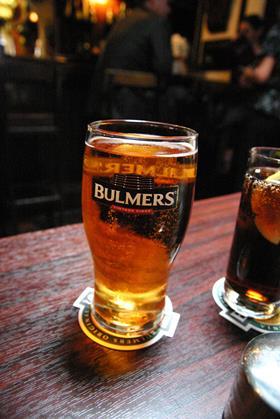
Warm early summer weather helped propel annual cider sales above the £1 billion mark for the first time since 2014.
Sales of cider rose 5.5 per cent year on year to just over £1bn in the 12 months to 15 July 2017, Nielsen figures show. Sales between mid-May and mid-July alone increased 16 per cent year-on-year, with May being the second hottest since records began in 1910 and June one of the best in years.
Cider brands seeing particularly strong growth included Thatchers (up 44 per cent), Kopparberg (+21 per cent) and Rekorderlig (+17 per cent). Strongbow remains the market leader, with a 28 per cent market share.
“This is extremely welcome news for cider manufacturers after what’s been a sustained period of struggle,'said Nielsen liquor expert Helen Stares.“However, it also highlights how highly dependent the cider industry is on good weather – essentially it’s been brought back into growth off the back of some near record-breaking temperatures.
'Cider is arguably the most reliant alcohol on good weather in terms of consumer behaviour. Its key to long-term and sustainable growth is making itself more attractive to people outside of the BBQ season, as indicated by our preliminary data showing sales dropped off quite notably once the weather worsened from late July.”
Beer was another beneficiary of the baking early summer, with British households spending 9 per cent morebetween mid-May and mid-July than the same period last year. That helped the category to grow five per cent annually to £3.9bn.
Strongly performing brands included Corona and Coors Light (both up 25 per cent), Budweiser (+18 per cent) and Peroni (+15 per cent). Stella Artois' 12.5 per cent share makes it the market leader.
“Beer’s improved performance is particularly impressive considering the comparison is against a summer that included football’s second-biggest international tournament, the European Championships,”pointed out Stares.“Even against that comparison, over half a million households bought beer in the early summer of 2017 that didn’t in the equivalent period in 2016.
'Alongside new customers, sales revenues are up due to a combination of higher prices and shoppers trading up to more premium brands.”



